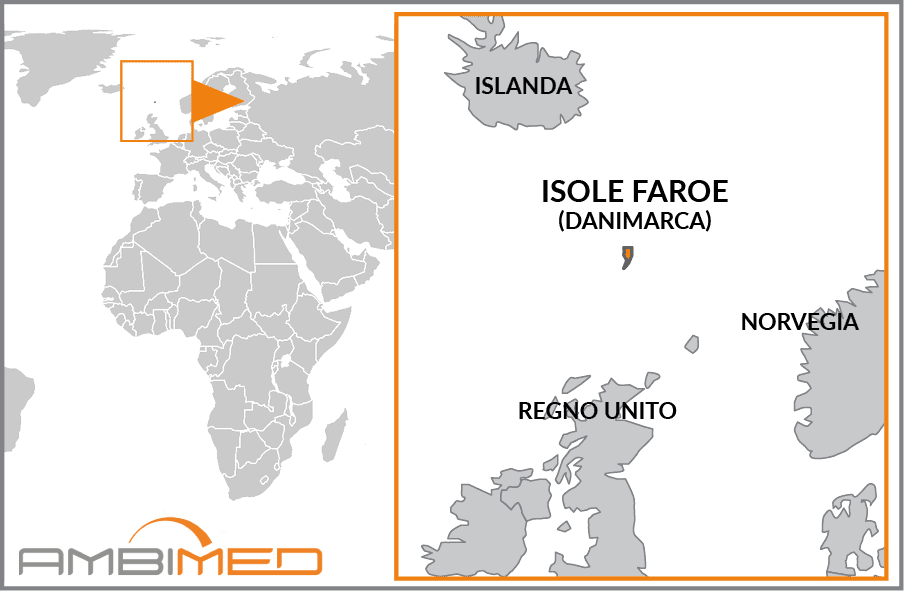Ambimed-Group
Travel Medicine
Business Travel Medicine
Easily manage your reservations and stay constantly updated on Ambimed services.

|
Country Name |
Føroyar Færøerne |
|
Continent |
Europe |
|
Surface area |
1,396 km² |
|
Capital |
Tórshavn |
|
Population |
52,100 (2019) |
|
Language |
Faroese and Danish |
|
Currency |
Faroese Krona (DKK) |
|
Time zone |
-1hr compared to Italy |
|
Area code for Italy |
0039 |
|
Area code from Italy |
0045 |
Yellow fever vaccination is not required.
Infection typically occurs through contact with the saliva of an infected animal, usually caused by bites, scratches or licks near open wounds or mucous membranes (e.g. mouth, nose, eyes). The most common vectors are dogs and bats, but cases of infection in other domestic animals have also been reported.
Caused by toxins released by the bacterium Clostridium tetani, the risk of tetanus infection is present throughout the country.
There have been no relevant reports.
The following vaccinations are strongly recommended as these diseases can be contracted anywhere in the world. Experts advise that you protect yourself and other travellers by making sure you are up-to-date with all of the recommended vaccinations. This will allow you to travel safely, while minimising the risk of exposure to infection.
The Faroe Islands is an archipelago in the Atlantic Ocean, located on the confines of the Norwegian Sea between Scotland and Iceland. It is a constituent country of the Kingdom of Denmark.
The terrain consists of a highland region, with average elevations between 300 and 400 metres (and reaching almost 900 meters on Slættaratindur Mountain), overlooking an extremely rugged coastline with sheer cliffs that plunge almost vertically into the sea.
The climate is oceanic, with winter temperatures, mitigated by the warm Atlantic currents (averaging between 3°C and 4°C) and cool summers (averaging approx. 10°C). Rainfall is frequent throughout the year and sunny days are rare.